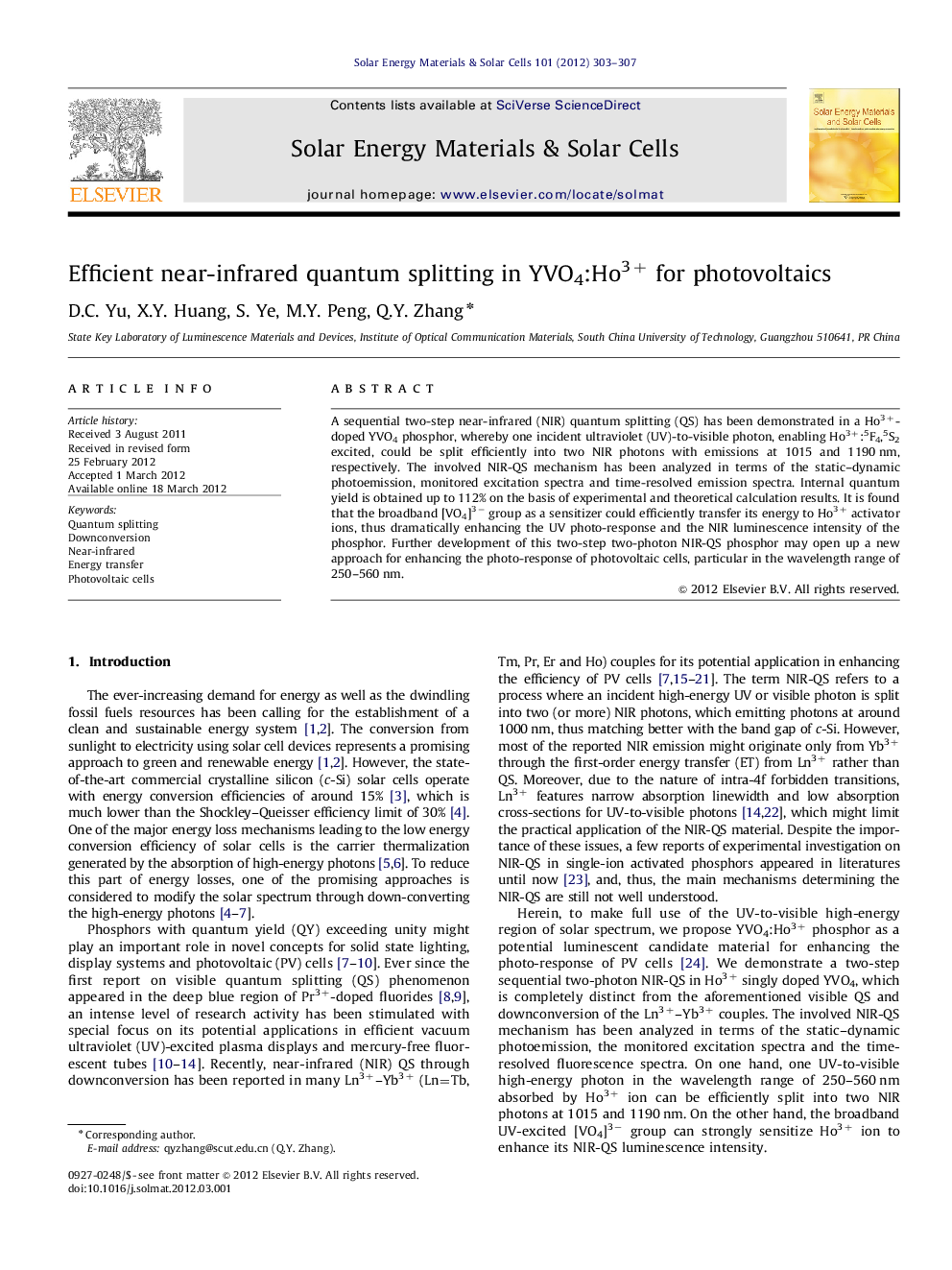| Article ID | Journal | Published Year | Pages | File Type |
|---|---|---|---|---|
| 79312 | Solar Energy Materials and Solar Cells | 2012 | 5 Pages |
A sequential two-step near-infrared (NIR) quantum splitting (QS) has been demonstrated in a Ho3+-doped YVO4 phosphor, whereby one incident ultraviolet (UV)-to-visible photon, enabling Ho3+:5F4,5S2 excited, could be split efficiently into two NIR photons with emissions at 1015 and 1190 nm, respectively. The involved NIR-QS mechanism has been analyzed in terms of the static–dynamic photoemission, monitored excitation spectra and time-resolved emission spectra. Internal quantum yield is obtained up to 112% on the basis of experimental and theoretical calculation results. It is found that the broadband [VO4]3− group as a sensitizer could efficiently transfer its energy to Ho3+ activator ions, thus dramatically enhancing the UV photo-response and the NIR luminescence intensity of the phosphor. Further development of this two-step two-photon NIR-QS phosphor may open up a new approach for enhancing the photo-response of photovoltaic cells, particular in the wavelength range of 250–560 nm.
► A sequential two-step near-infrared quantum splitting has been demonstrated in YVO4:Ho3+. ► Underlying mechanism is analyzed in terms of static, dynamic and time resolved spectra. ► [VO4]3− could transfer its energy to Ho3+, and thus enhancing UV photo-response dramatically.
